
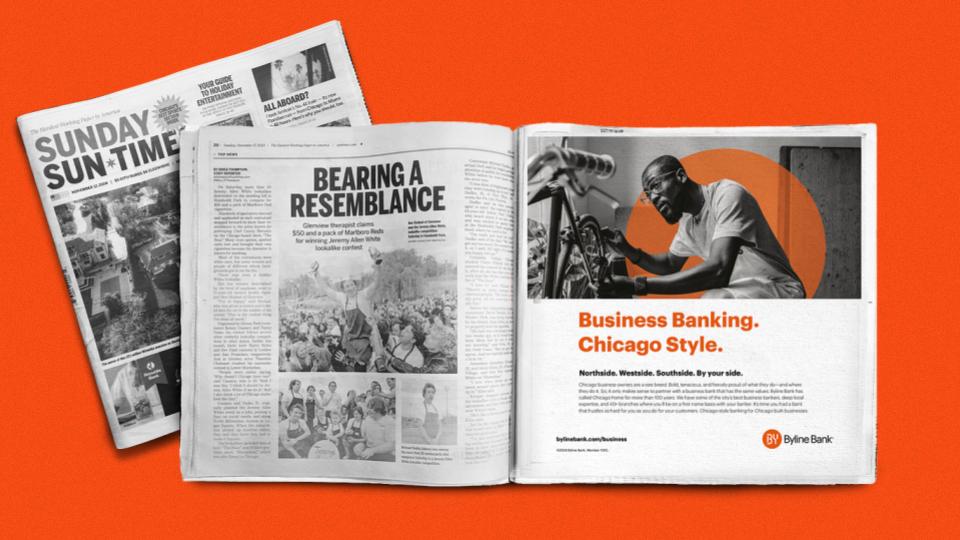









McGuffin inventoried Signature Bank’s website design and developed a new robust modular system that future-proofs the website to allow content to expand and adjust as needed. These modules were designed to be mixed and matched for flexibility so the client could update and create on-brand pages without the need for additional designers or developers.

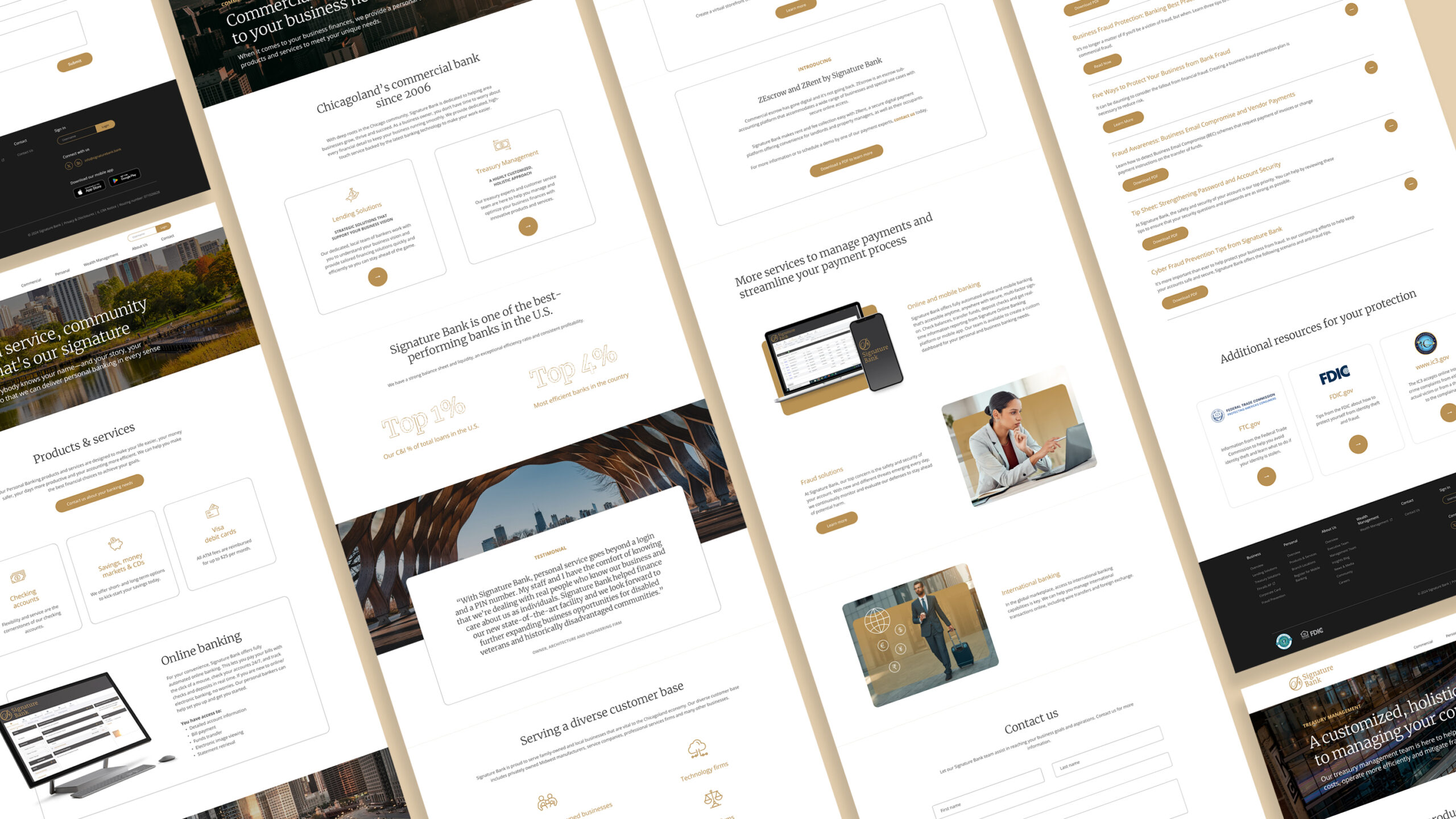

We began discovery with deep dive interviews with key roles across the bank; sales, marketing, analytics, product, customer experience and more in customer-facing and leadership positions. With a firm understanding of the bank’s perspective and goals, we next completed qualitative research, interviewing 18 owners of businesses varying in size/revenue, industry, and US location. We asked them how they used their bank’s website, what digital tools were important to them, what products or services they use/need, what business problems they need help with, and, most importantly, what was missing from their banking relationship.
Stakeholder interviews surfaced insights pointing to several areas small to medium businesses focus on when evaluating service providers:
We then identified and created business homepage content categories, the homepage hierarchy, category-level page architecture and nomenclature.


We tested our information architecture hypothesis against three primary target personas. The performed tasks of the user flows validated our assumptions and informed changes that would improve the navigation experience and overall engagement.
For our first user test, our goal was to validate the revised information architecture. The Tree Tests allowed us to focus on sitemap navigation and labels, without page design. In other words, if small business users had to rely on only the menus to navigate, how well could they do it? Could they easily find the information they need?


Outputs of our interviews, information architecture, user flows and tree tests all worked together to support, challenge and inform our hypothesis. For the user testing sessions, we created wireframes providing two different homepage experiences. Once the testing was complete, we moved on to create the remaining pages for the business section.
We tested three unbranded concepts (stimuli) with 11 different information modules. Test participants represented a relatively even mix of businesses whose annual revenue ranged from $100,000 to $2,000,000.
Our desired outcome for the research was to assess the effectiveness of each concept and individual module. We wanted to determine which combination proved the most useful in helping a business prospect move forward in the journey toward a purchase decision with Bank of the West.











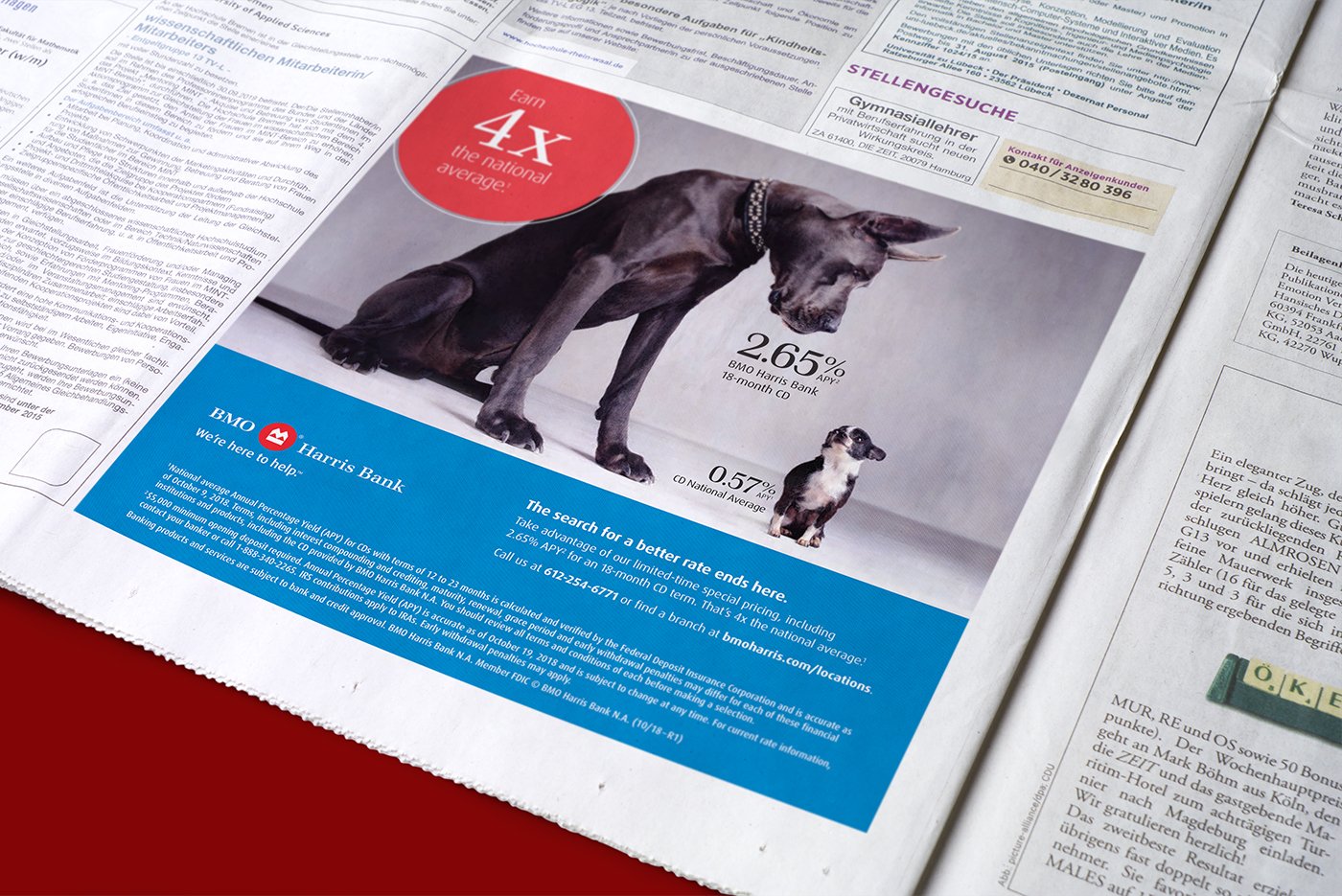



Bank of the West
Corporate Responsibility Communication

Bank of the West
Corporate Responsibility Communication

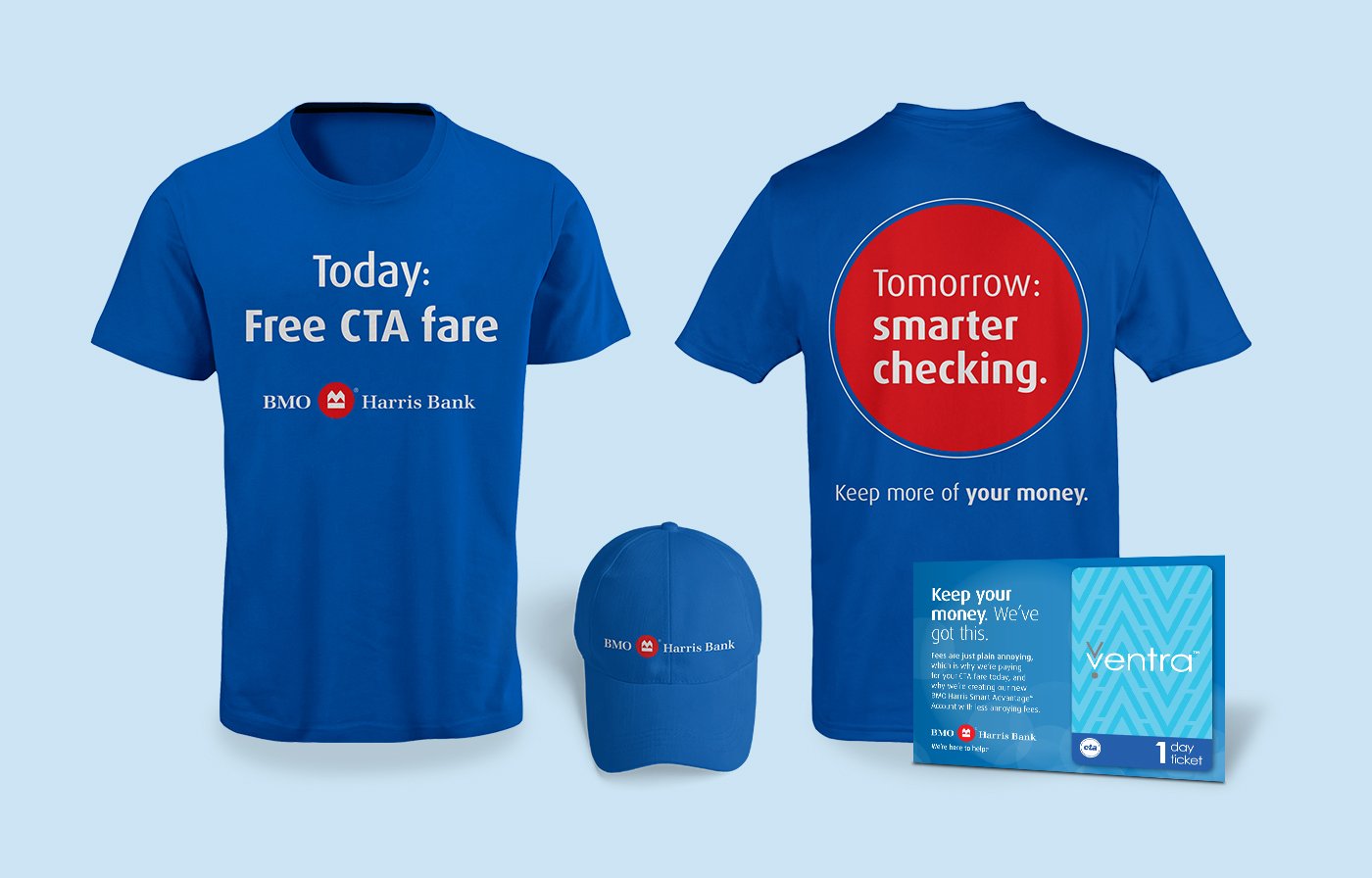

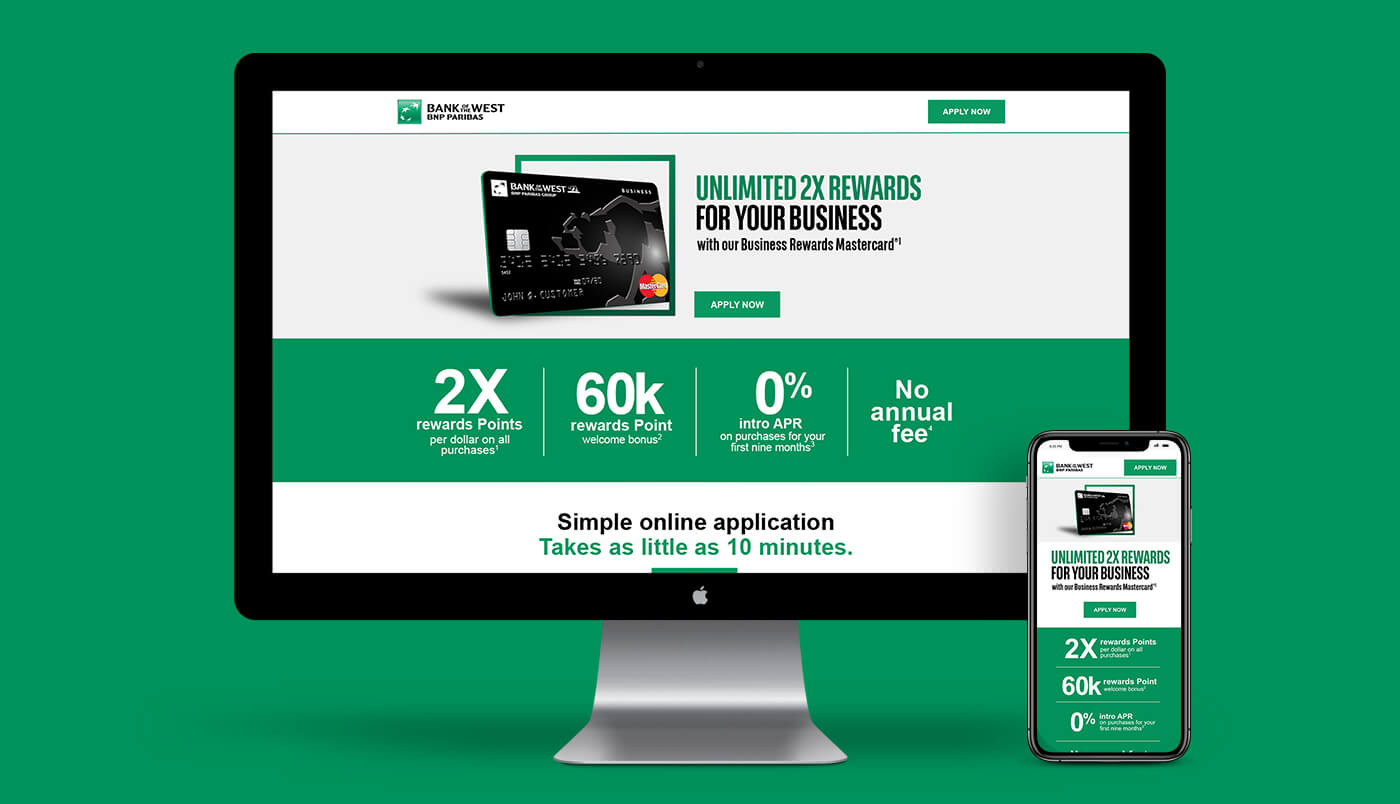


Bank of the West
Small and Midsize Enterprises Campaign